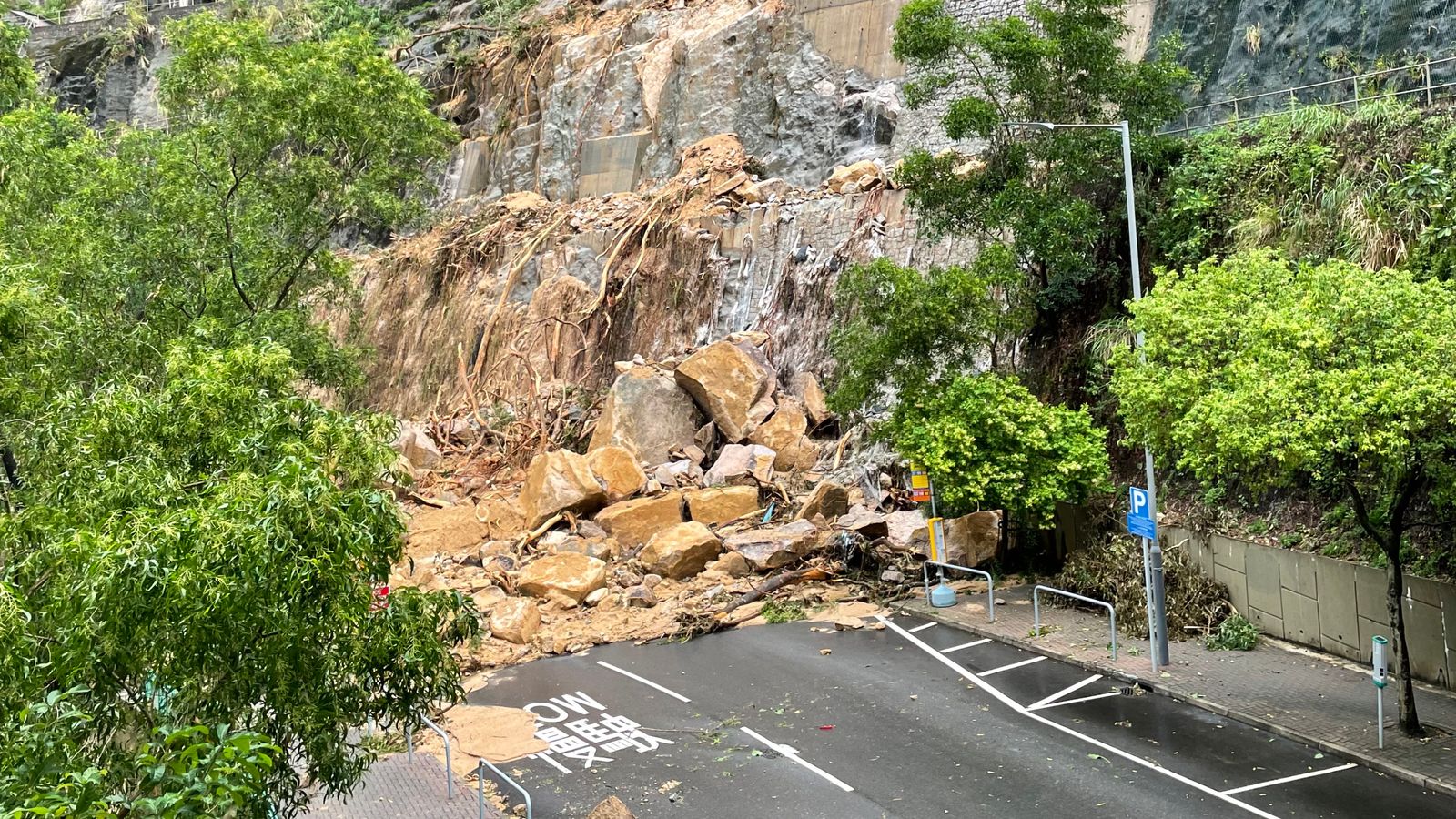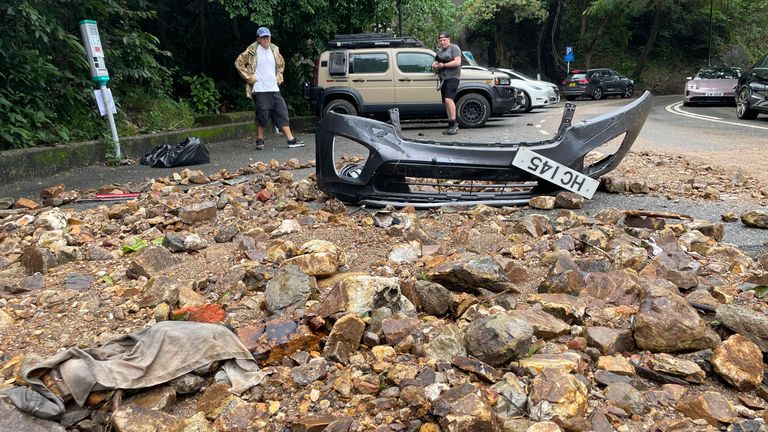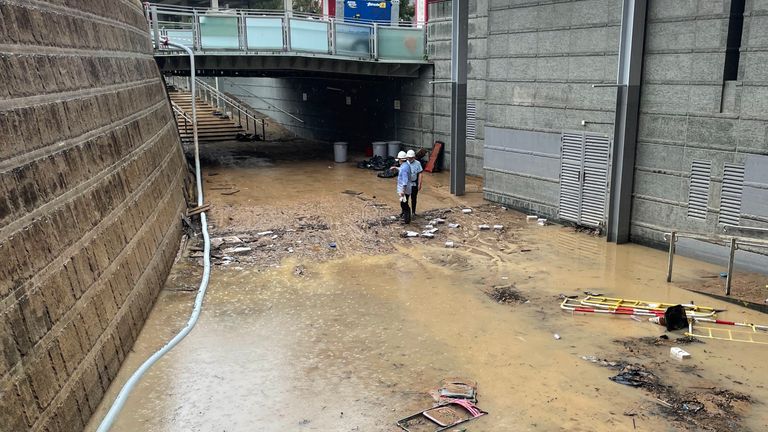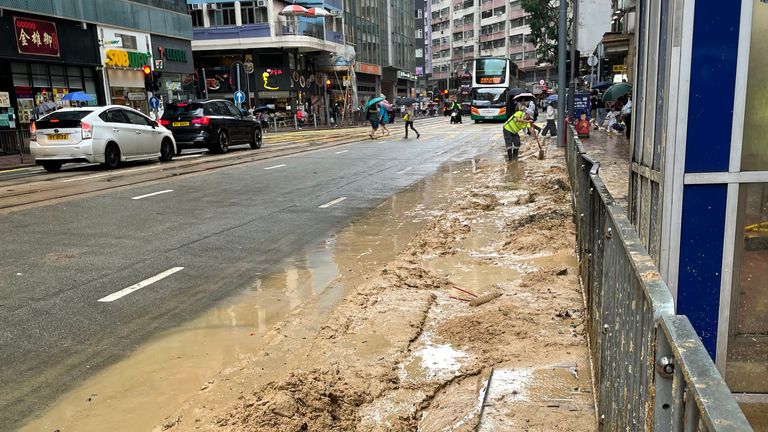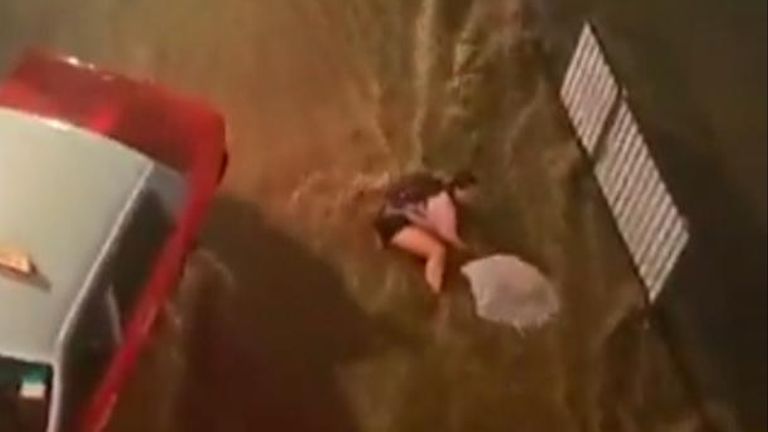In the eastern part of Hong Kong Island there is a small community who live beneath a steep cliff.
They are all different ages and professions, and they have all lived here for differing amounts of time, but they all say they’ve never seen anything like this.
Two nights ago, when the rain poured down harder and faster than at any time since records began in 1884, they were woken in the night to the sound of terrifying rumbles and crashes as boulders the size of buses came sliding down the hill opposite them.
The road that encircles their compound is now utterly impassable, the small park and basketball courts between that and their homes now looks like rock gardens and collections of debris. It is truly a mercy their buildings were not a few feet closer to the cliffs.
The landslide destroyed pipes, so now most buildings here don’t have any running water, huge temporary tanks have been set up where elderly residents come with their buckets and bottles to fill up.
It’s here we meet Mr Sin who showed us up to his apartment. His window is just metres away from where some of the rocks fell, his bed right beneath that window. He describes how he woke to hear the panes of glass shaking.
“It was very frightening,” he says.
But he’s worried too about what might come next. There are huge boulders still balanced precariously on the cliff, and while the rain has eased in intensity, it is still coming down. Many of the residents worry it’s still not safe here.
There is a sense that Asia’s financial capital is taking a breath today and assessing the damage.
In some areas of the city it is worse than others.
Along roads in hillier parts, you can see where water crashed down, and remnants of cars that had clearly been smashed by falling debris. A sink hole has opened up where half the road had just collapsed, swallowing at least one car with it.
Then there are the businesses counting the cost. Streets saw waves of waists high water – the grates and steps that many have to protect themselves were just not enough.
A particularly hard-hit spot was the Temple Mall shopping centre in the popular Kowloon district. The floods entirely submerged the lower ground floor and mud lines showing where the water rose to are well above head height.
Nearly 48 hours after the rains began and dozens of workers are still sweeping away water thick with mud. A number of employees of various shops affected had come to look round and assess the damage.
“We think it’s a total loss” one told us, literally every item that was in the store likely destroyed.
Given the intensity and historic nature of the rain it is remarkable how quickly the water itself receded – streets where waves had been chest height are almost clear.
It’s a testament of Hong’s Kong excellent infrastructure and drainage; this is a city that is well used to storms and is designed to deal with them.
But this rain has left more devastation than most, not to mention two deaths and over 100 people who needed to be treated in hospital.
Many feel they just weren’t warned about the deluge.
And there is an awareness too of just how much more regular all this seems to be. There have been two typhoons here just this week, and mainland China has suffered a summer of unusually severe floods which have claimed the lives of dozens of people.
What happened here in the last few days shows how even places that are among some of the best prepared in the world for severe weather can be hit hard and unexpectedly fast, and costs continue to mount.
